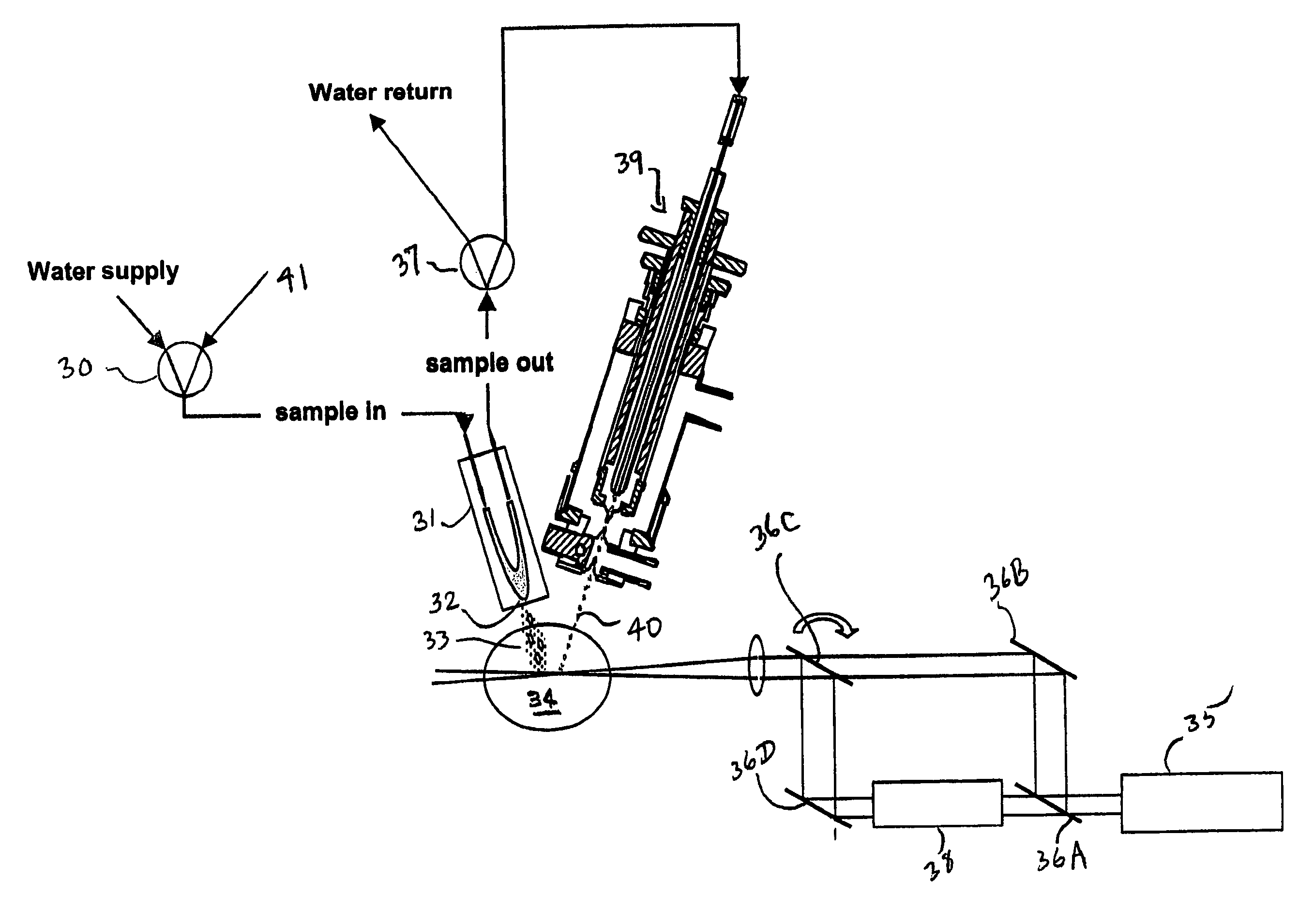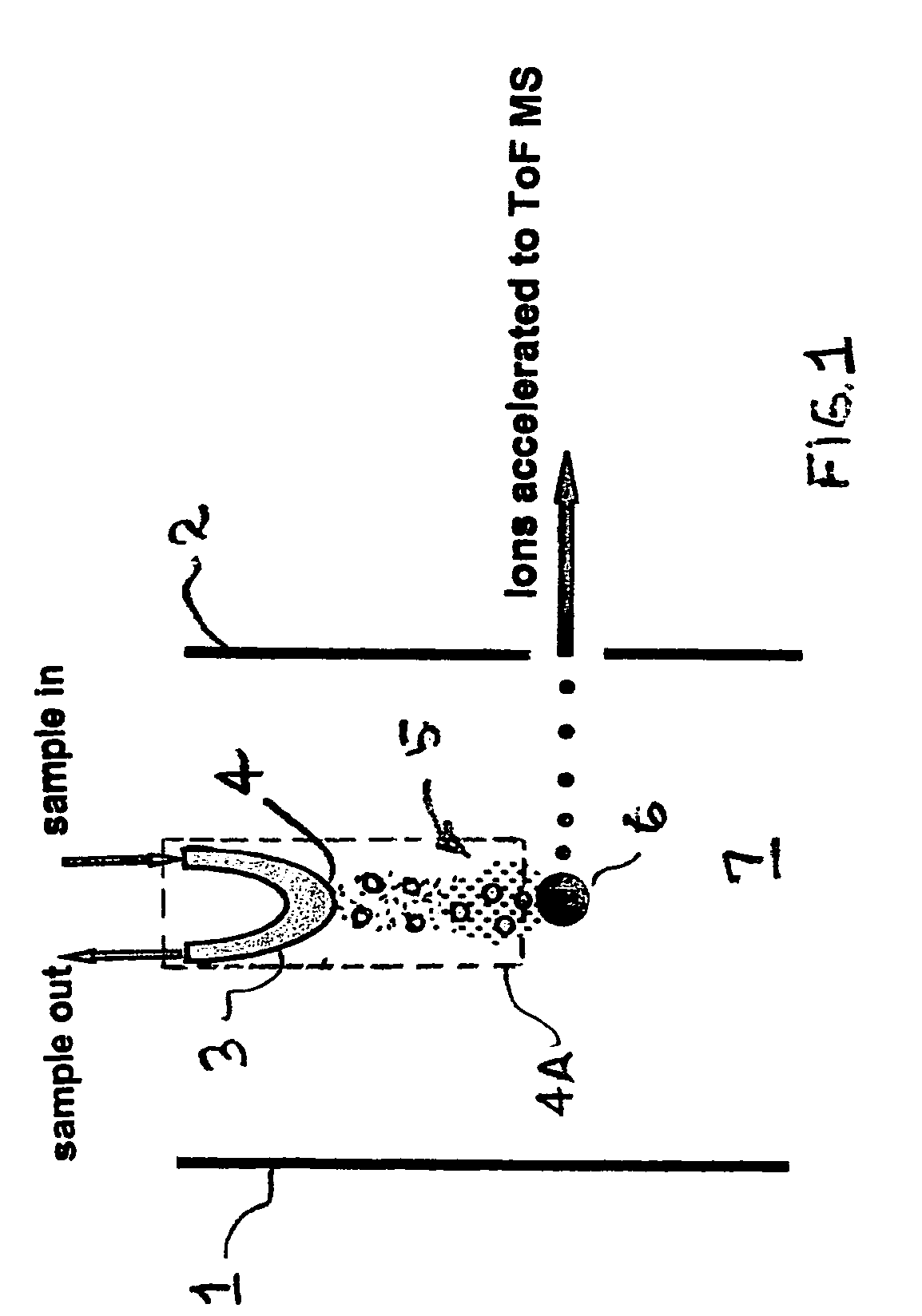Method and apparatus for the detection and identification of trace organic substances from a continuous flow sample system using laser photoionization-mass spectrometry
a mass spectrometry and laser technology, applied in the field of trace species analysis two-photon resonance enhanced multi-photon ionization (rempi) instruments, can solve the problems of difficult analysis of complex mixtures and inability to detect molecules using conventional nanosecond pulse-duration laser ionization sources
- Summary
- Abstract
- Description
- Claims
- Application Information
AI Technical Summary
Benefits of technology
Problems solved by technology
Method used
Image
Examples
example 1
[0056]A membrane introduction device was obtained commercially from MIMS Technology (Palm Bay, Fla.), consisting of a flow injection module and a heated membrane tip. The device contained a membrane of pharmaceutical grade platinum-cured silicone tubing (HelixMark) manufactured with Dow Corning Silastic Q7-4750. The sample is loaded into the flow injection module which maintains a constant flow of water through the membrane tip. As the analyte solution passes across the inner surface of the membrane, the target organic molecules diffuse through the membrane and evaporate into a REMPI mass spectrometer ionization chamber. The temperature of the membrane is controlled by varying the temperature of the water flow. As the temperature is increased, the analyte diffusion rate through the membrane increases, thus reducing the measurement time. However, diffusion of organic compounds is hampered as the temperature reaches 100° C. due to formation of bubbles in the water. Tests were performe...
example 2
[0059]A second group of tests was conducted to evaluate reproducibility and limits of detection (LOD) for the membrane inlet / laser photoionization / mass spectrometer combination described in Example 1. For this purpose, sample concentrations of 10, 1.0, 0.1, 0.01 and 0.001 μL / L were prepared through serial dilution of benzene, chlorobenzene, and o-xylene in deionized water. Toluene was not used in these low concentration tests because of its residual background due to initial spiking at high levels in the reservoir. In these tests, the 2 L reservoir was filled with deionized water then spiked with 20 μL of benzene-d6 to provide a constant reference at m / z 84 throughout the experiments. This reference compound permitted normalization of intensities of the analyte without concern for small changes in the operating characteristics of the combined membrane / laser / spectrometer system. To evaluate reproducibility, 10 mL of a 1.0 μL / L o-xylene solution was injected in the input of the flow i...
PUM
 Login to View More
Login to View More Abstract
Description
Claims
Application Information
 Login to View More
Login to View More - R&D
- Intellectual Property
- Life Sciences
- Materials
- Tech Scout
- Unparalleled Data Quality
- Higher Quality Content
- 60% Fewer Hallucinations
Browse by: Latest US Patents, China's latest patents, Technical Efficacy Thesaurus, Application Domain, Technology Topic, Popular Technical Reports.
© 2025 PatSnap. All rights reserved.Legal|Privacy policy|Modern Slavery Act Transparency Statement|Sitemap|About US| Contact US: help@patsnap.com



